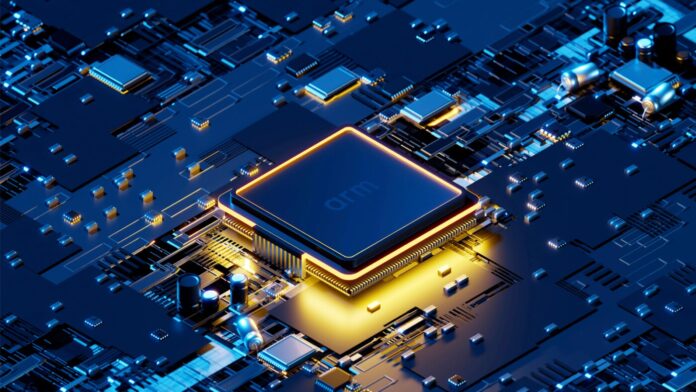Arm has introduced a new embedded processor core for running artificial intelligence (AI) on battery-powered IoT devices. The new Arm Cortex-M52 processor, part of its Cortex-M family of IoT reference designs for low-cost and low-energy integrated circuits, is billed as its “smallest, [and] most area- and cost-efficient processor”. It is geared for AI-IoT (AIoT) applications that require a boost in digital signal processing (DSP) and machine learning (ML) performance without the cost overhead of dedicated DSP and ML accelerators, the company said.
The Cortex-M52 includes Arm’s so-called Helium technology to boost miniaturised compute-analytics on IoT applications, which the company is already using to enable on-device AI in products at the “far edge of the network”. It stated: “The Cortex-M52 now enables Arm partners to take this capability into lower cost more power constrained devices… Arm is delivering a step change in matrix and DSP compute on microcontrollers for smaller embedded devices. The Cortex-M52 provides a simplified migration path from the Cortex-M33 and Cortex-M4.”
The Cortex-M52 extends the Armv8.1-M Cortex-M line-up, which includes the Cortex-M55 and Cortex-M85. It offers “up to 5.6-times” performance uplift for ML and “up to 2.7-times” DSP, compared to previous Cortex-M generations. The Cortex-M52 is suitable for a range of on-device AI apps, notably a richer user interface (UI), and more advanced voice and camera functions. It is targeted at automotive and industrial IoT. The fact it moves DSP capabilities onto the silicon does-away with the need for a separate processing unit, and saves on silicon area and cost.
It said developers would otherwise, as historically, be required to combine a CPU, a DSP, and an NPU in hardware, and write, debug and tune code for chips with three separate tool chains, three compilers, and three debuggers (“and so on”). The Cortex-M portfolio enables developers to run AI on a single toolchain and single proven architecture, including now for very low-power IoT devices. It said: “This ensures a unified development flow for traditional, DSP and ML workloads.” Specific integration and optimizations for ML frameworks also ease the workload for developers.
Arm said the new product implements the latest security extensions for Armv8.1-M, including PACBTI and Arm TrustZone technology. It also “accelerate(s) the route to” PSA Certified Level 2 silicon. Like with the Cortex-M55 and Cortex-M85, it offers “enhanced functional safety features that are crucial in many automotive and industrial control applications”. Cortex-M52 will also be available on Arm Virtual Hardware, the company’s cloud platform to enable software development in advance of silicon.

